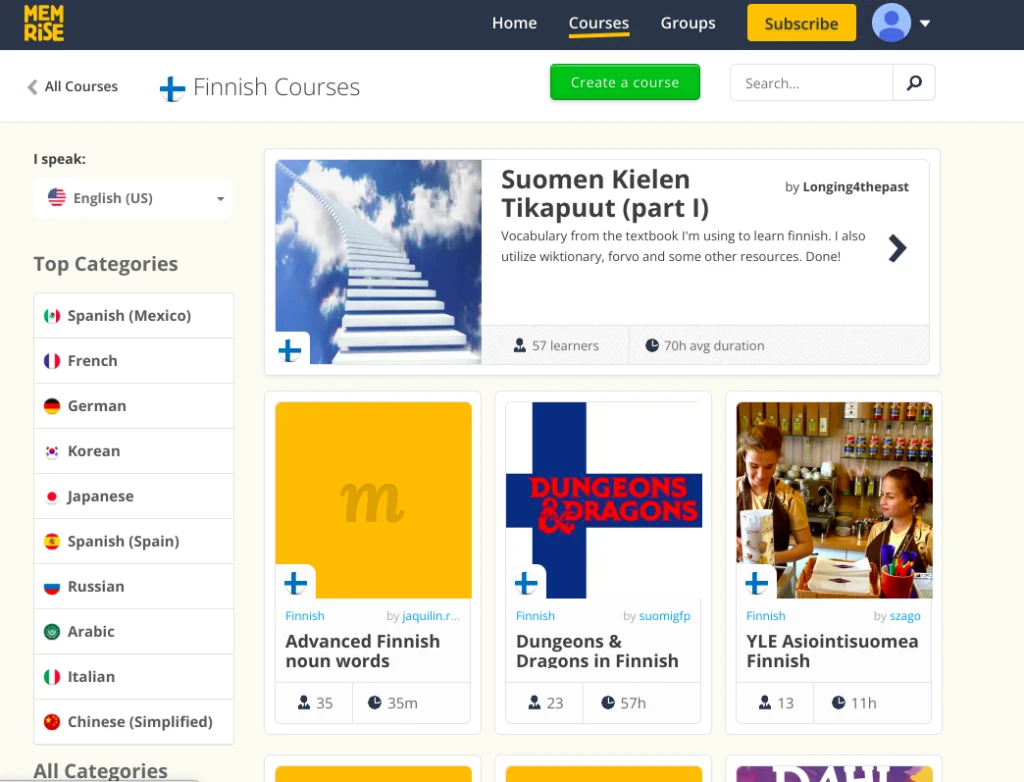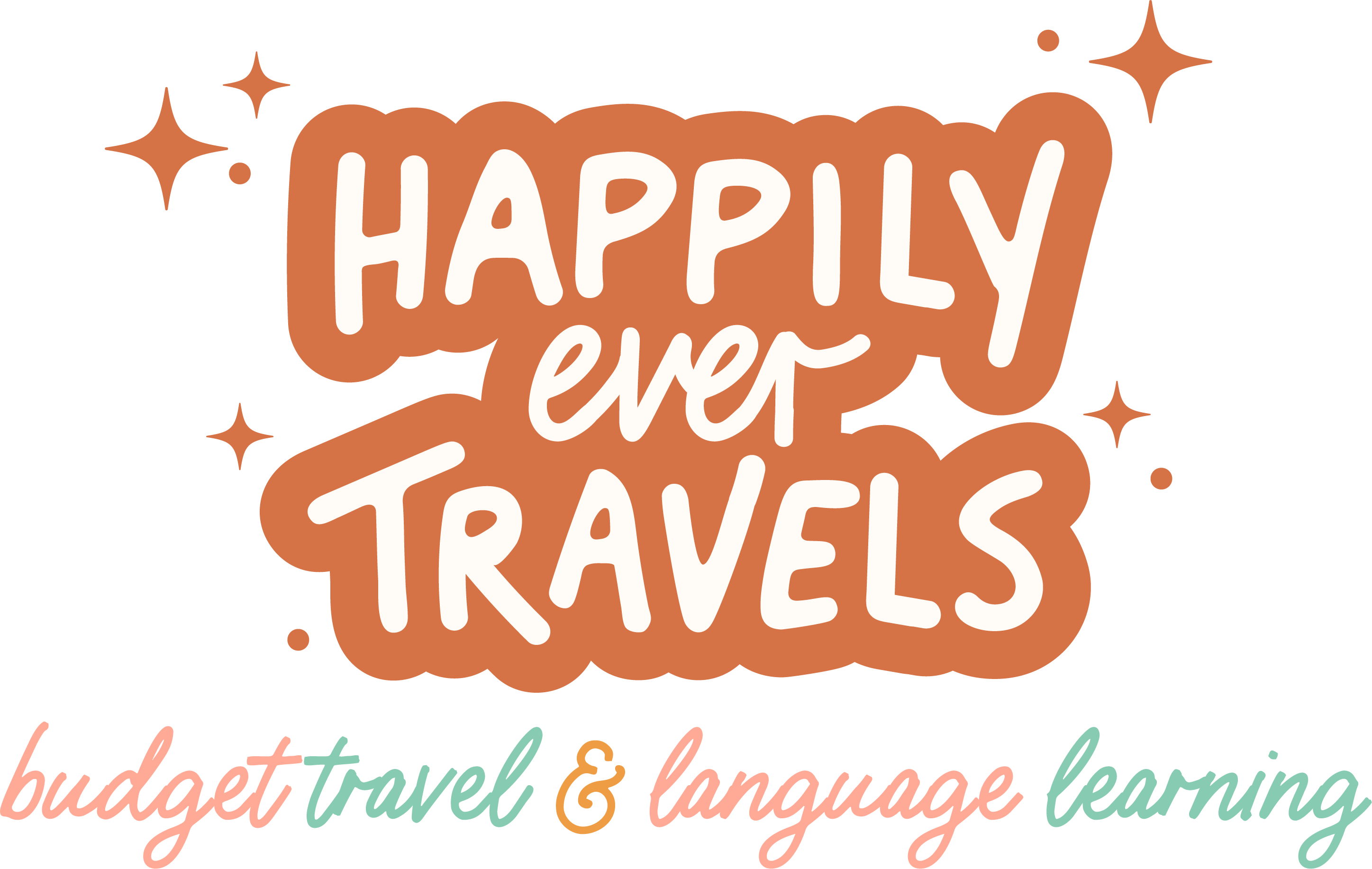With Icelandic being a historic and interesting language, many people are looking to learn at least a few words and phrases before they travel. So, which apps are best for learning Icelandic? Let’s dive in and find out.
10 Best Apps to Learn Icelandic
As we know, Duolingo doesn’t currently have a Duolingo Icelandic course that you can check out, but fortunately, there are a lot of alternative language-learning apps that you can sink your teeth into.
Here are some of our favorites for you to check out!
1. Drops
Vocabulary is the fundamental building block of learning any language, and Icelandic is no different. If you’re looking to build up your bank of Icelandic words and phrases when you’re on the move, Drops is an easy-to-use and beautiful app to use.
It’s pretty straightforward: it’s a series of over 2,000 flashcards that are designed to be digested in bite-sized chunks.

Each card includes an audio guide to help you improve your pronunciation and listening skills as you build up your vocabulary. While the free version of Drops allows you five minutes of flashcard learning each day, you can easily upgrade to the Pro version and match up words and phrases until your heart’s content.
With such a simple interface, Drops is a great addition to your Icelandic language learning journey, but you might want to use it alongside an app or method that teaches you about grammar as well.
2. Pimsleur
One of the most annoying things about a lot of language learning apps is that each lesson lasts 15 minutes at an absolute maximum. It doesn’t give you enough time to get back into the flow of the language.
With Pimsleur, each lesson lasts 30 minutes and is structured to help improve speaking, listening, reading, and writing skills.
Pimsleur is designed to improve your Icelandic conversational skills in a practical way that you’re likely to actually use in real life. Using a variety of techniques including audio classes, flashcards, gamification, and more, it’s a comprehensive app that grows with you.
It even has different fluency levels, so it doesn’t matter if you’re a complete beginner, or an advanced learner wanting to improve fluency, Pimsleur will have a track to suit your individual needs. As far as Icelandic language learning apps go, this is one of the best ones on the market.
3. Clozemaster
Love learning a language based on context clues? That’s the basic premise of Clozemaster. This free app uses fluency tests, games, and common word lists to help improve your fluency and conversational skills in Icelandic.

One of the coolest things about Clozemaster is that you can either study solo or play against your friends and push each other to learn more Icelandic each day.
Clozemaster also has different tracks for beginner, intermediate, and advanced learners, so if you want to progress through your Icelandic language learning levels, you don’t have to switch apps or learning methods to do so, which is pretty cool!
As it’s also free, it’s a great option if you’re on a budget or just want to learn a little bit of Icelandic without wanting to commit to a monthly subscription or full yearly package. Besides, you can use that money to save for your trip to Iceland!
4. Memrise
Okay, so right up top we should mention that Memrise isn’t specifically a language-learning app. You’ve probably heard of it or used it to help you revise or study for exams or school projects, as it’s a user-generated revision platform.

So, you can find all kinds of useful Icelandic study tools, including Icelandic language media, flashcards, quizzes, presentations about grammar, and more.
It’s essentially the revision tools that other Icelandic learners have used and found helpful, so they want to share their wisdom with everyone else. It’s a lovely little premise.
The downside of Memrise is that there is no specific track or journey that you can follow to help improve your fluency or conversational skills in Icelandic. You kind of just have to search around and build up your resources that way.
Much like Drops, it’s a great platform to use in addition to a more structured language learning method, as a revision tool or refresher.
If you need to improve your Icelandic grammar skills, Memrise is unlikely to have the lessons and tracks you need to improve in a meaningful way.
5. iTalki
As we’ve already outlined, one of the best ways to learn any language is to hire a one-to-one native language tutor who can create bespoke lessons and correct you in real-time.
Unfortunately, not every town and city has native Icelandic tutors just sitting around waiting for students. That’s where iTalki comes in to connect language tutors and learners from all around the world.
You simply go onto the iTalki platform, search through their Icelandic tutors, and select the ones that work for you. The rates vary based on experience and availability and you can also read through plenty of learner reviews to see what their teaching style is.
All the lessons are conducted over a video call, so you can be anywhere in the world as long as you have a decent internet connection. Make sure to check your teacher’s timezone so that you can roughly line up your lessons!
6. Learn Icelandic. Speak Icelandic. Study Icelandic. By Bluebird Languages
We love a prerecorded lesson! If you can’t get a real-time tutor, prerecorded language lessons allow you to interact with the language, and understand the pronunciation and flow of the phrases as well. Learn Icelandic. Speak Icelandic. Study Icelandic.
By Bluebird Languages includes over 2000 prerecorded lessons that range from 15-45 minutes long, allowing you to really get into your Icelandic language learning practice.
The great thing about Learn Icelandic. Speak Icelandic. Study Icelandic. By Bluebird Languages is that you can pick the lessons and tracks that are relevant to your individual goals, needs, and level.
If you don’t think that you need to know all the colors and animals, then you don’t need to do that track! Focus on the practical vocabulary and grammar courses that you’re actually going to use in real life!
7. Preply
Similar to iTalki, Preply is a platform that allows native tutors and language learners to connect and conduct Icelandic lessons over video chat. Here, you can choose your Icelandic tutor, outline goals and objectives, and reasonably assess your level before getting started.
After all, no one likes feeling overwhelmed with too difficult content or bored with lessons below your level.
One of the key differences between iTalki and Preply is the Tutor Replacement Guarantee. Finding the right Icelandic tutor is difficult and you need to make sure you’re a good fit. That’s why if after the first session, you’re not happy with your chosen tutor, you can get a replacement absolutely free of charge.
It gives you peace of mind when you’re selecting your tutor in the first place. You can also purchase block lesson packages upfront on Preply, which are often cheaper than the hourly tutor rates.
I personally don’t use Preply, here’s why I chose iTalki over Preply.
8. Mango Languages
Looking for a stylish and easy-to-follow app that’s designed for Icelandic beginners? Mango Languages is relatively new on the language learning app scene, but its specially designed color coding design is having a big impact.
It uses this color coding to denote specific language patterns, so you can build up those associations in your head, making it easier to acquire new Icelandic skills.
A cool feature that’s regularly used in the Mango Languages app is the recording feature. You can record yourself reading out or just speaking in Icelandic and you can directly compare it to native speakers.
It’s really useful when you’re trying to boost your pronunciation confidence, and definitely a big plus point for this particular app.
9. Label Icelandic
It’s no secret that Icelandic grammar is difficult to get the hang of for beginners. Label Icelandic focuses primarily on Icelandic grammar, breaking it down into consumable chunks that make it easy to understand and digest.
It’s the perfect app for getting the basics of Icelandic grammar down and is split into four key sections: Theory Reinforcement, Vocabulary I and II, and Translation, which you can work through in your own time, supported by an audio voiceover that helps you perfect your pronunciation and listening skills.
With over 50 grammar lessons to go through, and a huge bank of resources that you can refer back to at any time, including grammar tables, glossaries, and more, Label Icelandic is the ideal app to use alongside vocabulary-building resources such as Drops or Memrise, to give you a more comprehensive Icelandic learning experience.
10. Optilingo
Want to dive right in and start learning useful Icelandic words and phrases that you’re actually going to use in real life? Optilingo uses spaced repetition and high-frequency vocabulary lists to give you practical lessons that cut to the chase and improve your Icelandic fluency in no time at all.
Whether you’re a complete beginner or want to boost your speaking and listening skills before heading out to Iceland, this is a super easy-to-use app.
One of the coolest things about Optilingo is the fact that it has both a hands-free and offline mode. This makes it one of the best Icelandic apps to use on the go no matter where you are in the world.
You can brush up on your Icelandic even if you’re nowhere near a stable internet connection, or if you’re abroad and don’t want to pay for an expensive overseas data package. It’s the ideal travel companion for learning Icelandic!
Who Speaks Icelandic?
Unsurprisingly, the majority of people who speak Icelandic live in Iceland and amounting to around 350,000. Many people who speak Icelandic outside of Iceland live in other Scandinavian countries like Sweden, Norway, and Denmark.
There are similarities between the ancient Scandinavian languages and the culture, so this isn’t unusual.
There are also a number of companies that are setting up headquarters in Iceland due to the high quality of living in the country, so more bilingual speakers are learning Icelandic in order to move and live there on a long-term basis.
Where Did Icelandic Come From?
Like a lot of Scandinavian languages, Icelandic stretches its roots back through the centuries. It’s actually derived from Old Norse, the language used by Vikings.
Some people think Icelandic is actually Viking, but it is a modernized form of Old Norse, much like Swedish and Norwegian. Speaking any version of Viking does sound pretty cool though…
Why Learn Icelandic?
With Iceland growing in popularity among tourists, it’s important to learn a couple of new words and phrases before you go. Despite the vast majority of Icelandic people speaking English fluently, it’s polite to try and speak the language while you’re in Iceland.
It’s also becoming popular with expats. Iceland is consistently voted as one of the happiest nations and best places to live. There’s no getting around the fact that it’s expensive, but with the high amount of services available to residents and higher wages, it’s popular with remote workers.
Does Icelandic Use a Standard Alphabet?
Strangely enough, Icelandic does use a different alphabet from other Scandinavian languages. There are additional letters and glyphs that represent specific sounds.
This can be tricky to pick up at first, especially if you have experience in Norwegian or Danish, which can sometimes feel similar to Icelandic. However, once you recognize the additional letters and odd differences in the Icelandic alphabet, you’ll be able to pick up the language without much trouble!
Is Icelandic Difficult to Learn?
Honestly, it depends on what your native language is in the first place. If you’re learning Icelandic from English, it can be pretty tricky but it’s not impossibly hard.
It does have a very old style of grammar that’s popular in the Scandinavian language group, but once you get your head around it, you’ll be on the right path.
If you already know Swedish, Danish, or Norwegian, you’re probably going to be in a much better place to learn Icelandic. There are similarities, but there are also enough differences that you’re not going to get confused between the languages.
Can You Visit Iceland Without Knowing Icelandic?
The short answer is yes, you definitely visit Iceland without knowing Icelandic. It doesn’t mean you should though. English is a required language for Icelandic children to learn in school so the majority of Icelandic people can speak English fluently, or at least to a high conversational language.
If you journey out to more rural areas, the older population may not be as fluent in English as younger people in the cities or tourist areas, but the chances are they will still understand the basics.
However, when you’re visiting a new country, it’s just polite to try and learn at least the basic pleasantries in that country’s language. Things like hello, goodbye, thank you, I would like, please, etc.
It shows that you’re making an effort and respecting the culture that you’re visiting, both things that are super important if you’re a traveler and checking out other people’s homelands! If you’re short on time, just learn the basics and if you get stuck, switch to English – the effort will still be appreciated!
Is Icelandic on Duolingo?
Unfortunately, Icelandic isn’t on Duolingo at the moment. Despite being a language that is getting more popular, a course hasn’t been developed on Duolingo yet.
It doesn’t look like it’s being created anytime soon either, as the Duolingo Incubator does not mention Icelandic at all. Luckily, there are plenty of other amazing language-learning apps that you can use to improve your Icelandic skills.
Best Way to Learn Icelandic
As with any language, the best way to learn Icelandic is through immersion. Being surrounded by a language means that your brain and your ear get used to the sounds and intonation of a language even if you don’t understand everything that’s being said.
That’s why you often pick up a lot more of a language when you’re on holiday or around native speakers.
Of course, many of us can’t drop everything and move to Iceland for a couple of weeks – as much as we might like to! Another great way to learn Icelandic is to get one-to-one sessions with a native speaker.
This way, they can tailor the lessons to your individual needs and aims, while correcting your pronunciation and grammar in real time.
Having consistent lessons with a native speaker, it’ll also build up your confidence for when you have to speak to other native speakers in real life – an anxiety that plagues a lot of language learners!
Summary
We all know that Icelandic can be a tricky language to learn, especially if you’re a native English speaker who is trying to get your head around the complex and archaic grammar rules.
Language learning apps are a great way to get to grips with Icelandic, whether you’re looking to brush up on your vocabulary before a big trip, or you’re trying to improve your fluency levels before a big move to Iceland.
Why not try a couple on this list and see which ones work best for you? A lot of these improve specific sections of language, so you might want to combine a couple to get a well-rounded Icelandic learning experience!
Read More About Language Learning:
- What Apps Can I Learn Latin?
- Best Apps to Learn Afrikaans
- 15 Apps to Learn Greek
- Where Can I Learn Finnish?
- Best Apps to Learn Tagalog

Dayna Brockbank is a travel and language-learning blogger who has lived around the world but has now settled in Nice, France. She speaks 3 languages at varying levels of fluency: Spanish, Italian, and French, and graduated with a Bachelor’s in Spanish Education. She and her husband focus on making travel part of life by living cheaply and traveling on a budget.

